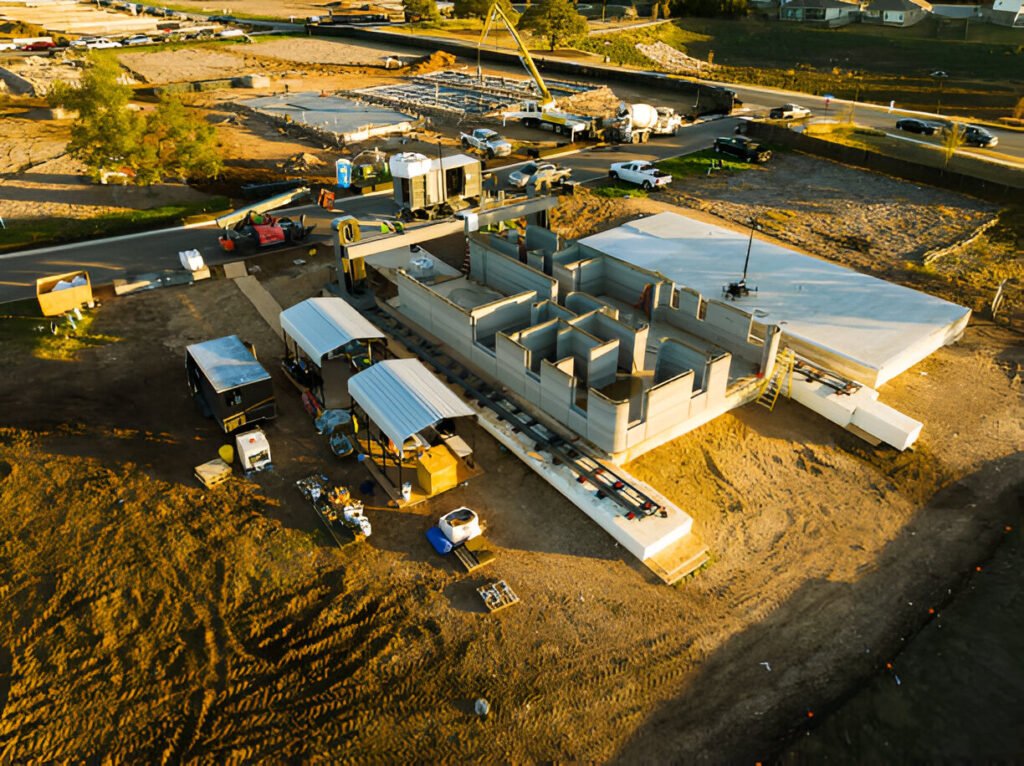New technologies are finally displacing traditional methods in construction. Maybe the most interesting and transformative trend is 3D printing: not only modification but even transformation of how we build and what could be built within the construction domain. What does such a revolution look like? Let’s get a bit deeper into this entirely fascinating topic: how does 3D printing work?

What is 3D Printing in Construction?
3D printing in constructions refers to the process of creating structures layer by layer using a digital model. Imagine a giant printer that spits out materials instead of ink! This technology allows architects and builders to create complex shapes and structures that would be challenging or even impossible with traditional methods.
The Technology Behind 3D Printing
At its core, 3D printing utilizes a method called additive manufacturing. This means that material is added layer by layer to form an object. Various materials can be used, including concrete, plastics, and even metals. By employing computer-aided design (CAD) software, builders can precisely control every aspect of the structure, from its dimensions to its intricate details.
Benefits of 3D Printing in Construction
Reducing Waste: A Greener Approach
One of the standout benefits of 3D printing is its ability to significantly reduce construction waste. Traditional building methods often result in excess materials being discarded, whereas 3D printing uses only what is necessary. Think of it as baking a cake: if you only use the ingredients you need, you won’t have leftover flour and eggs sitting around!
Speeding Up Construction Projects
Time is money in the construction industry, and 3D printing can dramatically speed up project timelines. While traditional construction can take months, 3D printing can produce entire buildings in a matter of weeks. This speed can be especially beneficial in emergency situations, such as after natural disasters when rapid housing solutions are needed.
Cost Efficiency of 3D Printing
With its reduced waste and quicker construction times, 3D printing can also lead to significant cost savings. Fewer labor hours are required, and the materials are often less expensive. This means that developers can allocate funds to other critical areas, such as improving community infrastructure.
Design Flexibility and Customization
Another exciting aspect of 3D printing is the design flexibility it offers. Architects can create unique, customized structures tailored to specific needs and preferences. Whether it’s a home with curved walls or an office building with unconventional angles, 3D printing makes it possible to bring bold visions to life.
Challenges Facing 3D Printing in Constructions
Despite its numerous benefits, 3D printing construction faces several challenges. Regulatory hurdles can slow down adoption, as building codes and standards must catch up with the technology. Additionally, the initial investment in 3D printing equipment can be high, deterring some builders from making the switch.
Real-World Applications of 3D Printing
Various companies and organizations are already leveraging 3D printing construction. For example, in 2018, a company in the Netherlands built the first 3D-printed house, showcasing the potential of this technology. Other projects include printing emergency shelters and even art installations that double as functional structures.
How 3D Printing Can Improve Safety
Safety is always a concern in construction, and 3D printing can play a vital role in enhancing worker safety. With fewer workers needed on-site and the ability to construct buildings in safer environments, the risks associated with traditional construction methods can be minimized.
Collaboration in 3D Printing Projects
Collaboration is key in any construction project, and 3D printing encourages teamwork among architects, engineers, and builders. By working together through shared digital models, everyone involved can contribute to the design process, leading to more cohesive and innovative results.
Is 3D Printing the Future of Housing?
Many experts believe that 3D printing could revolutionize the housing market. With rising housing costs and a growing population, the ability to create jkcement affordable, customizable homes quickly could provide a much-needed solution to the housing crisis.
Educational Impact of 3D Printing Technology
As 3D printing technology continues to grow, so does its role in education. Schools and universities are incorporating 3D printing into their curricula, teaching students the skills they need for future careers in construction and design. This hands-on experience can inspire the next generation of builders and innovators.

